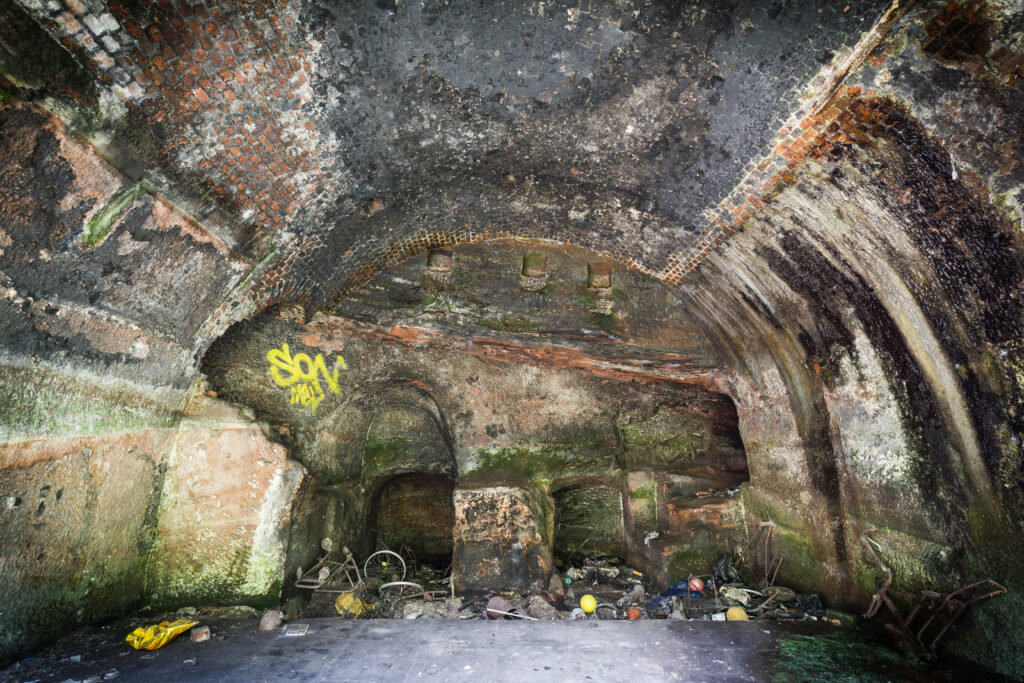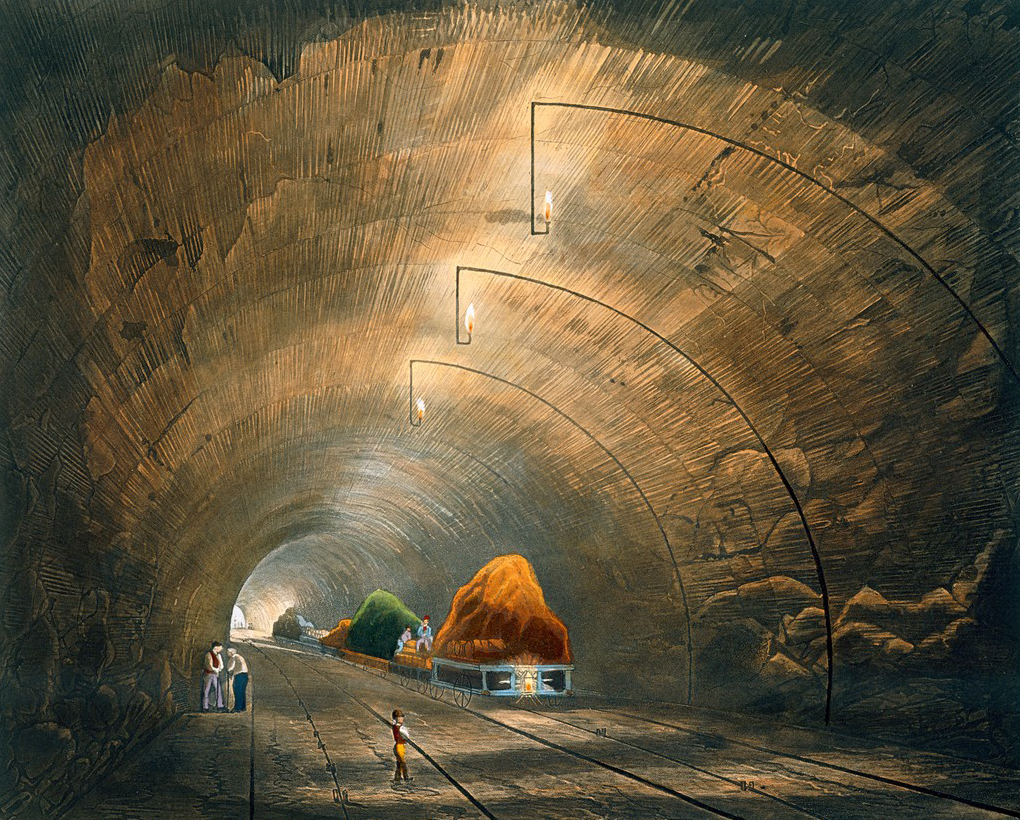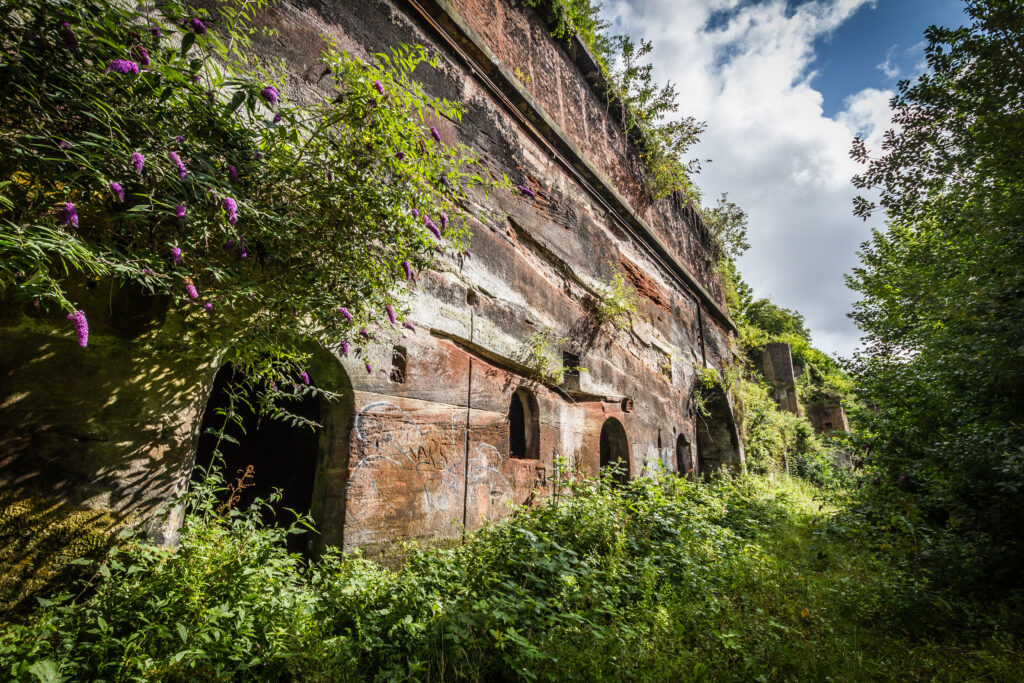Technological revolution through the mid-1990s brought 28.8kbps modems and the mind-boggling prospect – if overheads and latencies allowed – of a 1MB file being downloaded in five minutes.
Today, in a few parts of London, full-fibre broadband offers data transfer rates of 3Gbps, meaning a 1GB file can appear on your device a couple of seconds after requesting it. Change over the past 25 years has occurred at a bewildering rate.
All being well, when HS2 links a west London suburb with a site close to Birmingham city centre at an indeterminate future time, passengers will typically experience the blurred countryside at 205mph, the original aspiration of 250mph having been jettisoned to cut costs. But either speed would have literally been incredible in 1830 when trains began to run on the world’s first passenger line.
Messrs Grainger and Buchanan, “two respectable engineers from Edinburgh”, carefully calculated the rate of progress per mile as they ventured along George Stephenson’s Liverpool and Manchester Railway (L&MR) immediately after its opening, completing the 28-mile journey in 1 hour 20 minutes and 50 seconds – an average speed of 20.8mph and a peak of 28.6mph for the 16th mile. This was, of course, breath-taking by the standards of the day.
The engineers waited to depart in a 40-foot-deep cutting to the west of today’s Edge Hill Station whilst a locomotive, the Northumbrian, was attached – the two carriages and around 48 pioneering travellers having descended the incline under gravity’s assistance from the Liverpool terminus at Crown Street. Today, this hole in the ground plays a modest and almost invisible operational role as host to two sidings, but appearances belie its past status. This could be regarded as the railways’ datum point – zero, zero, zero, zero – if viewed from the right perspective.
Protection secured
Historic England was convinced of its significance last summer. After 40-plus years of research and excavations in search of archaeology, the site was added to the National Heritage List for England as a scheduled monument, the outcome of an application submitted in 2018 by the Liverpool and Manchester Railway Trust.
The hope is that the thick and damaging vegetation will eventually be removed such that the cutting’s hidden workings can be more extensively investigated, before featuring in plans to celebrate the 200th anniversary of the railway’s opening. Visitor access is a key aspiration. That gives those promoting the idea seven years to convince Network Rail – the site’s owner – of its viability and overcome the associated practical hurdles. Tick tock.
I was generously escorted around the site – including two tunnels which head off to the west – by Chris Iles and Paul O’Donnell from the Trust, with Network Rail’s Keith Billingsley ensuring our protection from hazards on or near the line.


Winding up
The L&MR’s opening on 15 September 1830 triggered a revolution and Liverpool did not intend to underplay its position at one end of it. Those arriving from Manchester entered a 300-yard long cutting before passing beneath a grand entranceway – designed by local architect John Foster, Junior – in the form of a Moorish arch which spanned the tracks between two Turkish-style buildings, housing a pair of stationary engines.
Beyond it was the Engine Station where locomotive traction initially gave way to horse power for the ascent of carriages to the passenger terminus and rope haulage for goods wagons pulled up from the distant King’s and Wapping docks, with both inclines accommodated in tunnels. Early locomotives did not handle gradients well and Liverpool’s sceptical authorities prohibited their use in the urban setting. Horses also found a role for marshalling purposes within the station limits.
The winding arrangements were of Stephenson’s invention and at the outset were operated by one 50HP engine ordered from his son Robert and built at their works in Newcastle. It boasted a single 24-inch cylinder with a six-foot stroke, a working beam of 13 feet, four inches, and a 20-foot diameter flywheel. The engine was salvaged and repaired after the ship used to transport it to Liverpool was lost off the Aberdeenshire coast. A second one was added in 1831, taking its place across the tracks from its sibling.
Excavated into the sides of the cutting were chambers in which boilers were located, the first being ordered from Isaac Horton of West Bromwich and delivering 30psi. This was an operation of considerable redundancy, with four boilers installed to serve the two engines, despite only one of each being needed. Exhaust smoke and steam from this system passed through flues in the sandstone to two ornamental chimneys, towering more than 100 feet above the tunnel portals and nicknamed ‘the Pillars of Hercules’. Other chambers served as coke stores, workshops, offices, and stables. Steps cut into the rock face provided foot access to and from ground level.
It’s thought that William Fairbairn supplied the winding mechanism. The continuous hemp rope had a maximum loading of 27 tons, typically distributed between six wagons which were attached by a ‘messenger’ – a short length of strong rope – to the leading wagon by a bankrider who travelled in it. There were two five-foot diameter wheels placed between the flywheel and a tightening carriage, all held in tension by a counterweight consisting of a bucket loaded with two and a half tons of scrap iron, hanging in a 120-foot deep well.
Descent into darkness
The cutting and tunnels were necessitated by a sandstone ridge east of the city centre. Located at the former’s west end were three portals: to the right, Crown Street Tunnel – a single-track bore of 291 yards in length, rising at around 1 in 72 to the terminus; to the left, an opening created for visual symmetry, used as a workshop and locomotive shed; in the middle, Wapping Tunnel – 2,250 yards long as built, occupied by two tracks and falling towards the docks at 1 in 48.
This passageway was an achievement of epic proportions, blasted with gunpower in seven lengths from eight construction shafts, work on the first of which was started in October 1826. It was originally intended to push the tunnel outwards from directly beneath these shafts, but surveying errors – prompting the resignation of engineer, Charles Vignoles – forced a realignment 20 feet to the north under the direction of Joseph Locke.
James Scott Walker, in his ‘Accurate Description of the Liverpool and Manchester Railway’ from 1831, observed that “Parties of workmen were employed, under intelligent and active surveyors at each shaft, driving the level towards each other, chiefly through a mass of red freestone, but often through loose and dangerous material; and it is worthy of remark, that guided by the trembling mariner’s compass, they met each other with most astonishing precision, the lines of cutting, though averaging each perhaps 500 yards, seldom varying above an inch at their junction.”

Mishap inevitably attended. On one occasion, a collapse 30 feet below Crown Street deposited loose peat and sand into the workings, delaying operations whilst a brick lining was erected. But the last of the pilot tunnels joined on 9 June 1828 to create a through route, an event no doubt greeted with great celebration locally. Such things generally were.
The public had a first official opportunity to satisfy its curiosity in July 1829 when the tunnel was thrown open for inspection. Lit by a “continuous and brilliant line of flame”, the whitewashed structure played host to “groups of gaily-clad pedestrians”, while the L&MR’s directors and the Mayor – together with many friends – took their places in a train of wagons which “let loose from the top of the inclined plane, thundered past the astonished multitudes by the impetus of their own weight, at a rate which, had they not feared running down some careless pedestrian, and restrained their speed, would have brought them to Wapping in three minutes, and other parties afterwards accomplished the distance in a shorter space of time.”
Neighbouring Crown Street Tunnel was, in comparison, a much more modest affair, but is notable for a masonry ring of datestones close to its western end, confirming completion in 1829. Small water troughs were cut into the sidewalls from which the horses could drink. But they were soon relieved of their duties, with rope haulage introduced to this tunnel not long after opening.
Changing times
Such was the L&MR’s success that the Crown Street terminus was rapidly deemed inadequate and poorly located for passengers. Thus, a new line was pushed closer to Liverpool’s centre, diverging from the original route half-a-mile further east and opening to what is now the city’s Lime Street Station in 1836, via another tunnelled, rope-worked incline. The boiler houses at Edge Hill Engine Station initially supplied steam for its stationary engines, courtesy of pipework laid through a tunnel cut into the rock, but the system proved woefully inefficient and new boilers were soon installed closer to the engines.
In the 1840s, a double-track tunnel was driven into the cutting face – alongside Wapping Tunnel – enabling locomotives to reach the yard at Crown Street which had remained open for goods traffic.
By 1849, a new stationary engine at Edge Hill Station – near the junction for the Lime Street line – was hauling longer trains up the Wapping Tunnel incline, making redundant Stephenson’s original facilities. Foster’s engine houses and the Moorish arch were demolished in 1865, the latter attended by tragedy when a collapse occurred, killing labourer Thomas Fowler. The operation made way for the cutting’s south side to be cut back by around three metres, allowing the installation of a capacity-increasing track layout.
Wire cables had replaced the winding ropes before locomotive haulage was introduced through Wapping Tunnel in 1896, four large ventilation shafts being sunk by 1899 to release the resulting smoke. The bottom end of the incline was extensively modified at this time, with the tunnel cut back to its current length of 2,111 yards to accommodate a junction for three tunnelled spur lines serving an enlarged goods station. However, this facility closed in 1965 as use of the docks declined. Crown Street goods station survived as a coal yard until 1972, since when it has become a public park, blocking the west portal of the incline tunnel.

First steps
You feel the history here with every step. The site of Edge Hill Engine Station is a truly special place, made all the more so – oddly – by the sense of neglect and isolation. Beneath your feet – lost amongst the undergrowth – is the footprint of the engine house and the pits and channels of the winding gear. You can hear that former industry over today’s silence.
On the morning of 15 September 1830, according to the Liverpool Mercury, “the population of the town and the country began very early to assemble near the railway”. Everyone who was anyone was in attendance: His Grace the Duke of Wellington (Prime Minister), Prince Esterhazy (Russian ambassador), the Marquis of Salisbury, the Bishop of Lichfield and Coventry, Sir Robert Peel, and the Rt Hon William Huskisson, the MP for Liverpool, who was struck and killed on the track during a stop at Parkside Station. “Never was there such an assemblage of rank, wealth, beauty and fashion in this neighbourhood.”
They all gathered at the Crown Street terminus; 33 carriages being escorted through the tunnel to eight locomotives waiting in the cutting. At 11 o’clock, “the signal gun being fired, the procession started in beautiful style, amidst the deafening plaudits of the well-dressed people who thronged the numerous booths and all the walls and eminences on both sides of the line. The speed was gradually increased till, entering the Olive Mount excavation, the carriages rushed into the awful chasm at a rate of twenty-four miles an hour. The banks, the bridges and the rude projecting corners along the sides were covered with masses of human beings.”
The railway age had begun. Here, at Edge Hill.
Image credit: Graeme Bickerdike / Liverpool & Manchester Railway Trust

